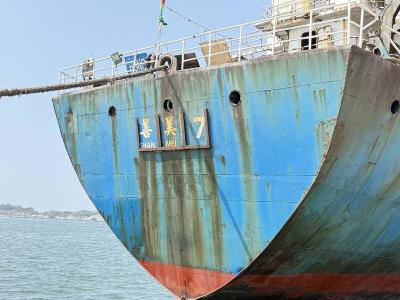A recent Sino-Russian joint air patrol conducted over the waters off Alaska was designed to counter the US military in the Pacific and demonstrated improved interoperability between Beijing’s and Moscow’s forces, a national security expert said.
National Defense University associate professor Chen Yu-chen (陳育正) made the comment in an article published on Wednesday on the Web site of the Journal of the Chinese Communist Studies Institute.
China and Russia sent four strategic bombers to patrol the waters of the northern Pacific and Bering Strait near Alaska in late June, one month after the two nations sent a combined flotilla of four warships to the Pacific Ocean via the Osumi Strait.

Photo: Russian Defense Ministry Press Service via AP
These activities marked the eighth air patrol and fourth joint naval patrol of Chinese People’s Liberation Army (PLA) and the Russian Armed Forces (RAF) since 2019, Chen said.
Although the Chinese and Russian bombers stayed in international airspace, they passed through the US-Canadian air defense identification zone near Alaska, sparking concern in Washington and Ottawa, he said.
Although the aircraft did not enter the US’ sovereign airspace, the aerial patrol signaled a boost in China’s and Russia’s capabilities in conducting joint operations, he added.
The PLA and RAF demonstrated a high level of coordination and planning in selecting the air route, fuel supply and air control arrangements crucial for ensuring successful cooperation in joint warfare and an ability to respond to developments in the battlespace, he said.
The exercise demonstrated a rising level of interoperability in information sharing and communications between China and Russia’s forces, though the exact capabilities utilized to share data are unknown, Chen said.
Moscow’s statement that Su-30SM and Su-35S fighters participated in the exercise would imply improved interoperability, as a military communication network’s complexity increases with the number of distinct aircraft types being operated, he said.
Citing information published by the US and Canada, Chen said PLA Xian H-6 bombers had used Russian air fields for refueling and maintenance, suggesting adequate coordination was achieved in logistics.
The patrol showed that the PLA’s nuclear deterrence capability has improved as the exercise brought Chinese bombers within the 200-mile (322km) striking distance of Alaska’s coastline, he said.
The Sino-Russian military cooperation reflects the increasing intensity of the competition between the two nations and the US-led coalition in the Indo-Pacific, he said, adding that Beijing considers such alliances to be necessary to counter Washington and its allies’ collective power, he said.
China’s military cooperation with Russia likely targets third parties and the US military’s presence in the Indo-Pacific region, Chen said.

An undersea cable to Penghu County has been severed, the Ministry of Digital Affairs said today, with a Chinese-funded ship suspected of being responsible. It comes just a month after a Chinese ship was suspected of severing an undersea cable north of Keelung Harbor. The National Communications and Cyber Security Center received a report at 3:03am today from Chunghwa Telecom that the No. 3 cable from Taiwan to Penghu was severed 14.7km off the coast of Tainan, the Ministry of Digital Affairs said. The Coast Guard Administration (CGA) upon receiving a report from Chunghwa Telecom began to monitor the Togolese-flagged Hong Tai (宏泰)

A cat named Mikan (蜜柑) has brought in revenue of more than NT$10 million (US$305,390) for the Kaohsiung MRT last year. Mikan, born on April 4, 2020, was a stray cat before being adopted by personnel of Kaohsiung MRT’s Ciaotou Sugar Refinery Station. Mikan was named after a Japanese term for mandarin orange due to his color and because he looks like an orange when curled up. He was named “station master” of Ciaotou Sugar Refinery Station in September 2020, and has since become famous. With Kaohsiung MRT’s branding, along with the release of a set of cultural and creative products, station master Mikan

RISING TOURISM: A survey showed that tourist visits increased by 35 percent last year, while newly created attractions contributed almost half of the growth Changhua County’s Lukang Old Street (鹿港老街) and its surrounding historical area clinched first place among Taiwan’s most successful tourist attractions last year, while no location in eastern Taiwan achieved a spot in the top 20 list, the Tourism Administration said. The listing was created by the Tourism Administration’s Forward-looking Tourism Policy Research office. Last year, the Lukang Old Street and its surrounding area had 17.3 million visitors, more than the 16 million visitors for the Wenhua Road Night Market (文化路夜市) in Chiayi City and 14.5 million visitors at Tainan’s Anping (安平) historical area, it said. The Taipei 101 skyscraper and its environs —

Taiwan on Friday said a New Zealand hamburger restaurant has apologized for a racist remark to a Taiwanese customer after reports that it had first apologized to China sparked outrage in Taiwan. An image posted on Threads by a Taiwanese who ate at Fergburger in Queenstown showed that their receipt dated Sunday last week included the words “Ching Chang,” a racial slur. The Chinese Consulate-General in Christchurch in a statement on Thursday said it had received and accepted an apology from the restaurant over the incident. The comment triggered an online furor among Taiwanese who saw it as an insult to the